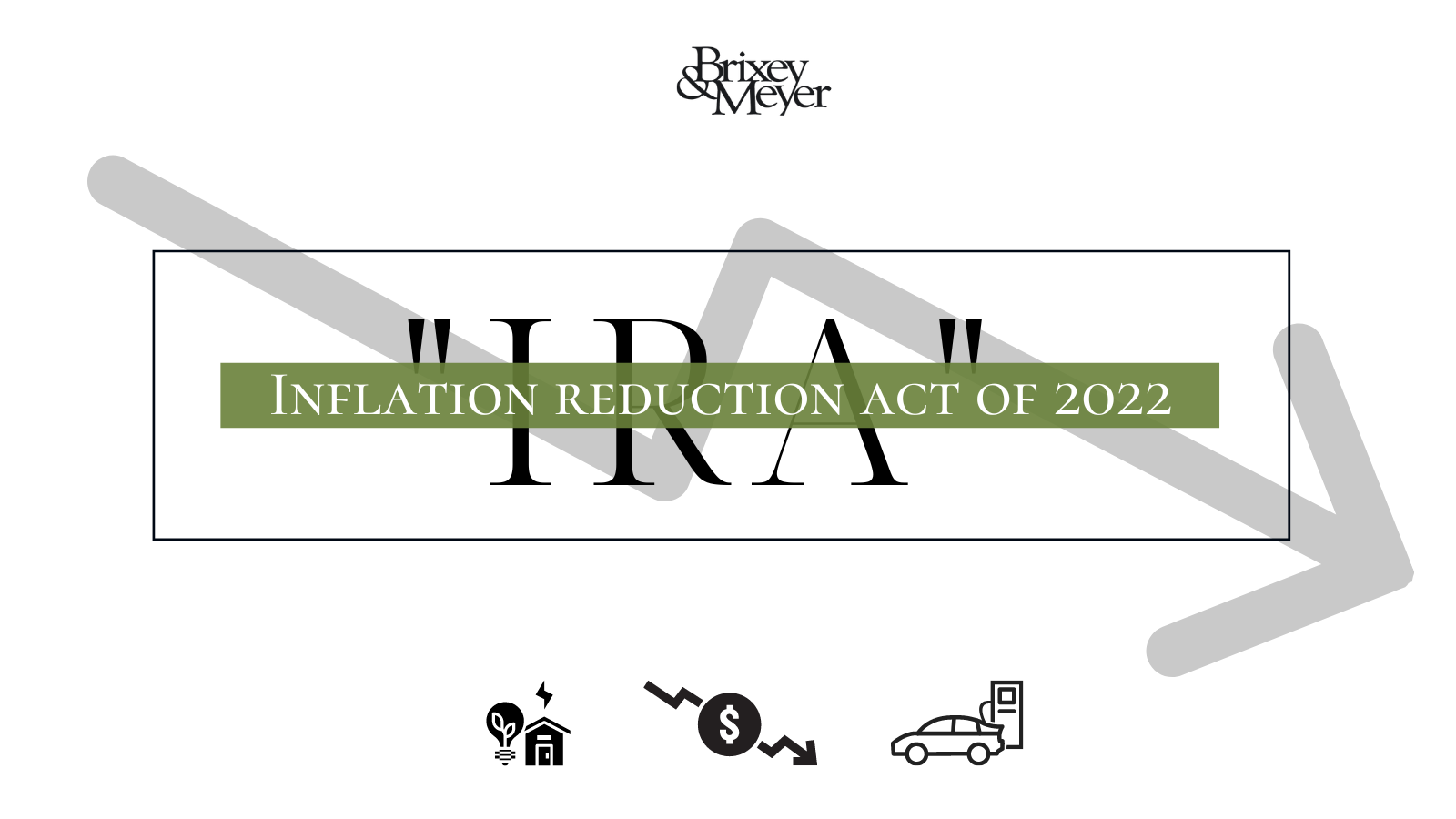Inflation Reduction Act of 2022: Programs That Could Impact You
%20(2).png?width=750&height=250&name=Copy%20of%20401(k)%20(2).png)
On August 16, 2022, President Biden signed into law the Inflation Reduction Act (“IRA”) of 2022. While there has been skepticism about the legislation’s ability to reduce inflation, there is little-to-no doubt that the financial incentives included in the bill provide the most significant resources in U.S. history for businesses to make climate-friendly investments.
There are three programs we would like to highlight in the legislation that could have a meaningful impact on your strategy & operations.
- Section 179D Deduction Increased Benefits: The Energy Efficient Commercial Buildings Deduction (179D) incentivizes commercial building owners to install energy-efficient systems. It provides an immediate deduction for costs related to energy-efficient installations. The deduction is increased to a potential $5.00 per square foot (compared to $1.88 from previous legislation) and can be taken on specific buildings every 3 years (rather than once over the life in previous legislation). Most non-profit organizations can now take advantage of the deduction and gift the deduction to tax-paying companies assisting them with architecture and design as incentives to focus on energy efficiency and conservation projects.
- New Energy Efficient Home Credit ("EEHC"): Extended, increased, and modified: The EEHC is found under Internal Revenue Code Section 45L. This credit expired at the end of 2021 but was brought back and increased under the IRA. The IRA increased the credit to $2,500 for multifamily homes constructed after 2022 that meet Energy Star requirements. The credit is $5,000 for multifamily homes constructed after 2022 that meet the DOE Zero Energy Ready Home requirements.
- Qualified Commercial Clean Vehicles: A new credit for vehicles purchased after 2022 but before 2033 having a gross vehicle weight rating of less than 14,000 pounds and having a battery rating of not less than 7 kilowatt hours. The credit is also available for mobile machinery, including vehicles that are not designed to perform a function of transporting a load over the public highways, and those vehicles can exceed the 14,000-pound weight limit but must have a battery capacity of not less than 15 kilowatt hours. The tax credit is worth 30% of the cost of the vehicle, up to $7,500 for vehicles less than 14,000 pounds, or $40,000 for mobile machinery. Tax-exempt entities can also get these credits as direct refunds, and a credit received can be transferred once.
When evaluating the potential return on investment of these programs, it is important to start by considering both the financial and non-financial implications of investments in energy efficiency or your vehicle fleet.
Financial
- 179D Program
- The 179D program requires an eligibility check be completed prior to initiating the project. This check ensures the projected energy savings from the project will be greater than 25%. Additionally, a modeling software from a pre-approved list from the U.S. Department of Energy must be used. This check will provide enough information to determine the estimated tax savings associated with the project.
- Contract labor’s use of prevailing wage and apprenticeship labor could have a meaningful impact on the overall cost savings from the project.
- A “Qualified Individual” outside of the company must certify that the project achieves the energy efficiency requirements of the program.
- New Energy Efficient Home Credit
- Contractors must also meet prevailing wage requirements to take advantage of credits in this updated program!
- Qualified Commercial Clean Vehicles
- Dependent on the size of your fleet and your sustainability goals (ex: net zero emissions), it may be helpful to tap an advisor to help analyze the options you have for purchasing.
Non-financial
How do the potential investments in these areas align with your ESG strategy? Allocating financial resources according to your ESG strategy will deliver a higher return on investment than one-off sustainability-minded investments. Some of these programs can be utilized until 2032 giving you time to first put your dollars towards the ESG topics of highest materiality for your business—it is what will drive the most financial value for your company and is what is most important to your key stakeholders.
The Brixey & Meyer team is ready and able to assist your organization in developing and executing on its ESG strategy, which will provide a guide for making sustainability-related investments. Additionally, our tax team stands ready to help you interpret, assess, and capitalize on these new programs and other available local, state, and federal tax incentives.

